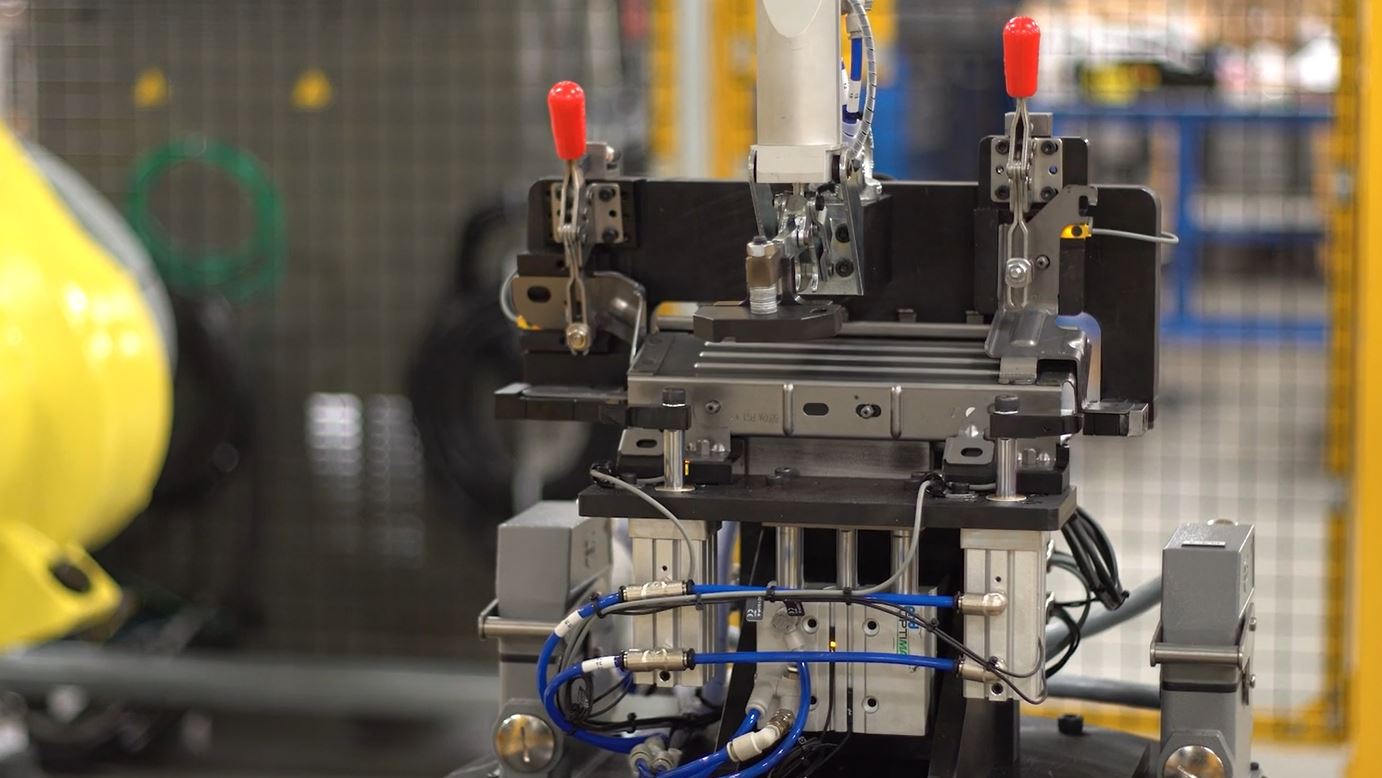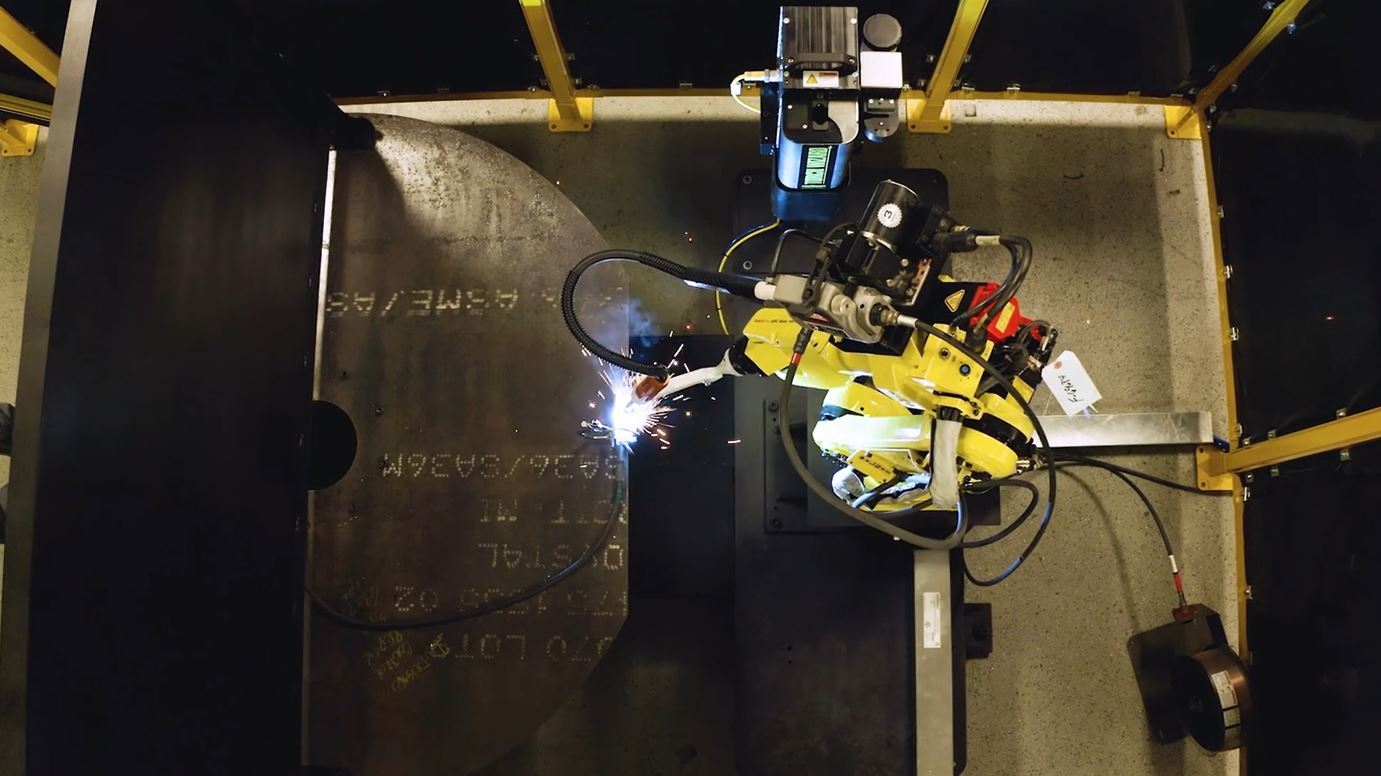Automated Robot Welding Systems Built to Last
Welding Robots Yield Repeatable Results
From limiting exposure to hazardous fumes to decreasing the risk of injury – robotic welding systems help save workers from doing a once dangerous job. The robot may weld a pre-programmed position, be guided by machine vision, or by a combination of the two methods.
Robotic Welding Application of Your Choice
We develop robotic welding systems using the two most popular applications.
Spot Welding
A current of electricity creates a pool of molten metal as it passes between the two metal bases. Joining the pieces of metal together.
Gas Metal Arc Welding (GMAW)
6,500 degrees Fahrenheit at the tip of the torch. This heats up the metal, producing a pool of molten metal beneath the torch that solidified upon cooling. Permanently fusing the parts together.
A Beautiful Weld Starts with Research
Curiosity and a desire to make things work better is our starting point. We then launch into a thorough qualitative and quantitative investigation to understand your process.
Flexible Robotic Weld Programming
Go from one part to another using the same weld cell.
- Less changeover using multi-process automated welding
Longer Lasting Weld Consumables
We take amperage and cooling into consideration when selecting weld consumables for less waste. So contact tips, nozzles, and liners last longer.
Good Cell Layout and Work Area
Improved workflow and easier access for maintenance and repair.
- Hold parts in place with custom weld fixtures and precise clamping
- Alleviate access problems with weld positioners and turntables
Weld Peripherals
Something Extra:
Enhance your welding automation with advanced technology and robot welding features. Add weld peripherals for consistent, high quality welds and faster cycle times.
Reamers
Prevent defects and weld rework caused by a clogged nozzle. Clean the dirt, debris, and spatter automatically during routine passes with a nozzle cleaning station.
Wire Cutters
Remove any inconsistencies in wire length. Cut the welding wire to a specified length for more consistent welds and a reliable arc.
Arc Shielding
Protect the integrity of your weld. Arc shielding applies a protective shield of gas or vapor. Minimizing the contact between metal and the surrounding air for a stronger, better weld joint.

Collision Detection
Protect your investment and employees. Software will command the weld robot to stop when torque exceeds a certain allowable threshold.
Weld Safety
Use safety light curtains, protective fencing, and e-stops for a more secure workspace perimeter.
Stamping Plant Increased Throughput to 440,000 Units Eliminated Welding and Transportation Costs by 27% with Custom Welding Cell
Because the robotic welding cell is capable of quick, precise and complex angular movements – the quality of the welds and cycle time were improved. The consistency of the weld positions greatly reduced the quality checks being performed and the rejection percentage.
Find Out How =>
Similar Projects
Partner with Us
Since 2005, the ICR robot design and integration team has been creating affordable robot integration systems and managing tricky integrations. We’re robot welding experts and work closely with process engineers and project managers to create your perfect automated manufacturing work cell.
Talk with Our Robot Weld Expert =>








